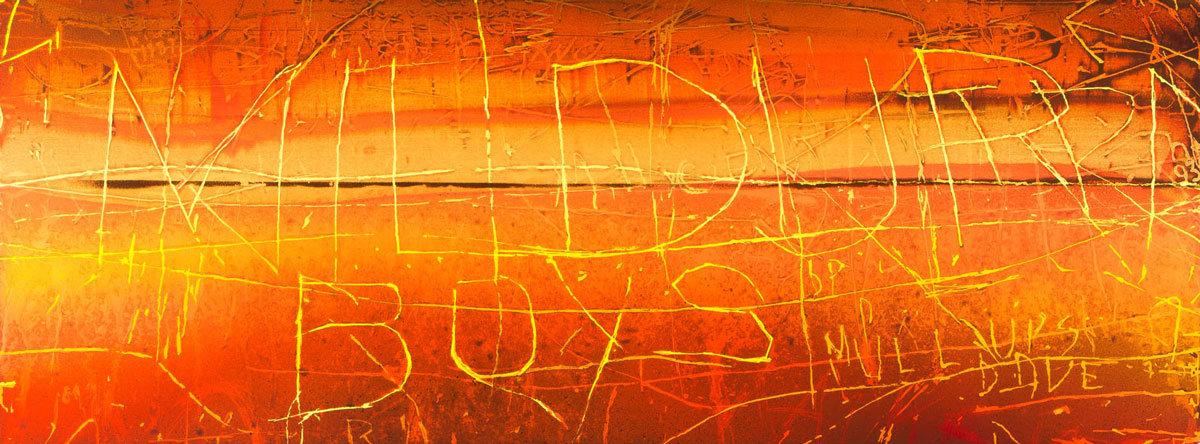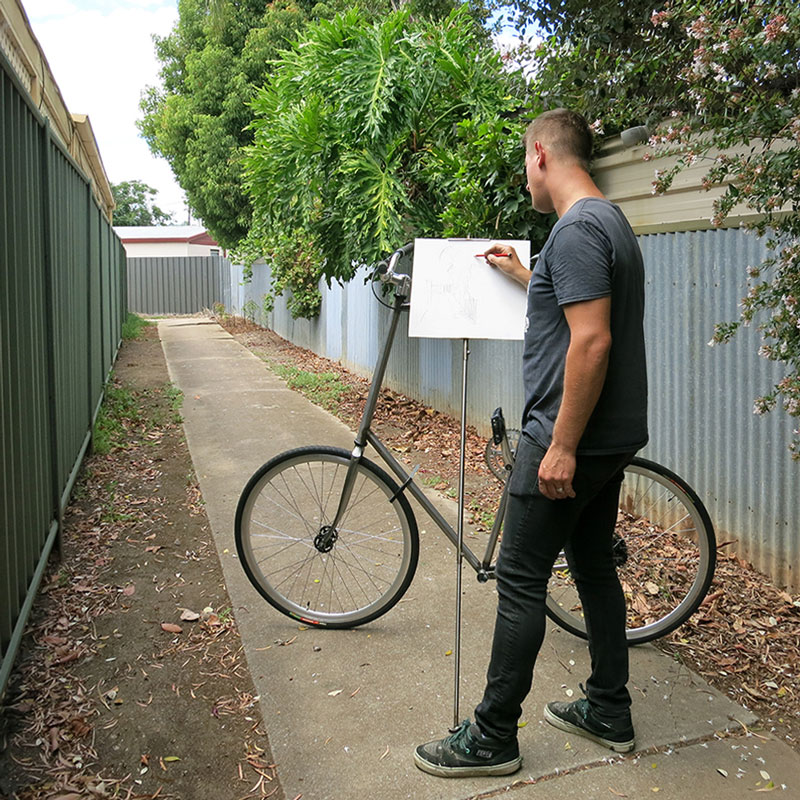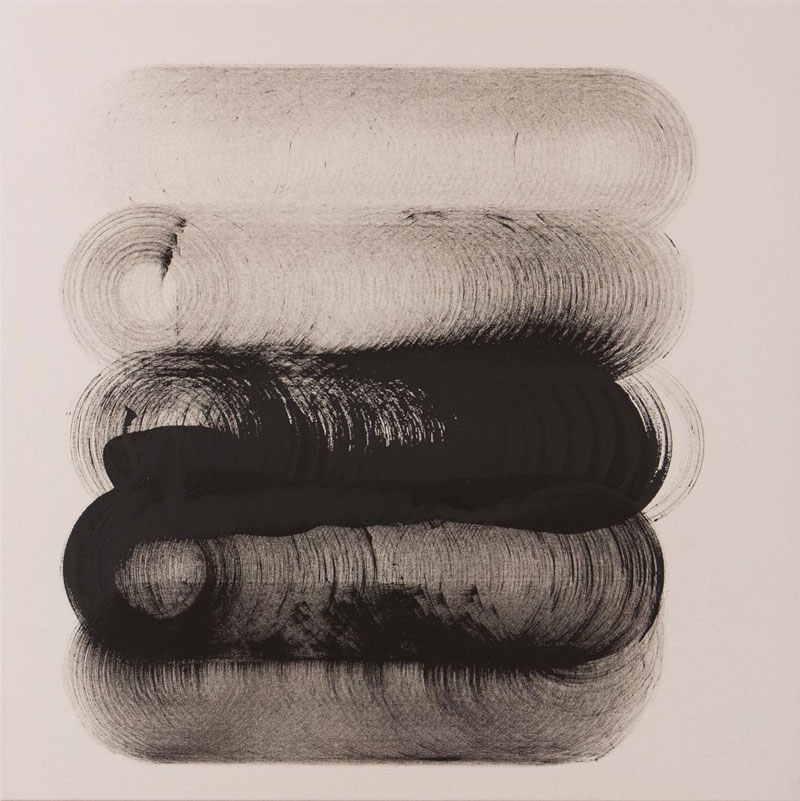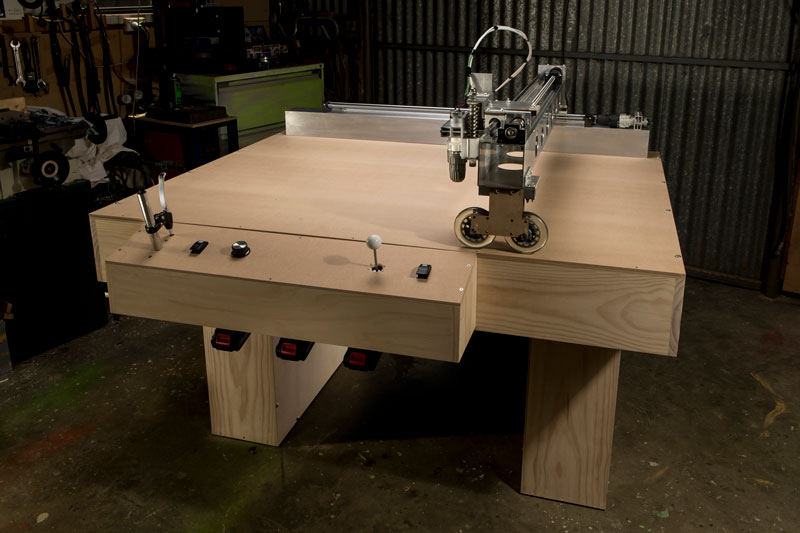
It is not uncommon in the broader narrative about art to fixate on the “artist as genius”. To question the artist’s hand and skill also generates unease. Cries of “my child could make this” or outrage expressed at the cost, the value placed on works of art, is a common reaction of by the wary, who think that they are being taken for fools. James Dodd’s exhibition Shed Wizard meets this unease head-on. Drenched in his signature hyper-colours of pink, yellow and orange we are presented with a short survey of Dodd’s practice, at the heart of which lies the Painting Mill.
Dodd does art differently. From scratching words found on park benches onto the surface of his paintings, to finding new applications for tools to become more than their function, he creates new work out of everyday materials and familiar scenes. Driven by a desire to reveal or elevate social behaviours easily dismissed as destructive or degenerate, Dodd’s draws out the grass-roots creativity of Australian vernacular traditions in sharp hyper-colour relief.
Alongside his abstract colour-designs and text-driven pieces of the past few years, Shed Wizard features a number of recent paintings made in response to the murals of Fred Williams commissioned by the Adelaide Festival Centre. In oranges, yellows and blacks, Dodd has created sunset colour fields, loosely following the contours of land, sky and river, along the Murray River. Words and phrases like “MILDURA BOYS” or “ACDC” are etched into the surface of the paint, with a jagged and deliberate hand. Vivid, restless and vaguely disenfranchised, there is an anarchic undercurrent to these jarring reflections on the cultural mores of suburban Australia.

Together with his paintings, these are two significant, but radically different machines. One is the smooth, sleek Easel Rider as freak bike and remix of the en plein air tradition of landscape painting. Known for his extreme bike designs, Dodd has a blog dedicated almost entirely to his bike-related projects, from tall-bike adventuring, to the design and build of the Easel Rider which is both a functional bike (with an easel that doubles as a bike stand) and a stand-alone work of art. Not quite a Duchampian readymade, it is certainly a nod in that direction. Borne from experiments in Dodd’s shed, this is a step up, with its polished silver surfaces, smooth welds and custom-manufactured parts.
While Easel Rider retains the still quality and status of an art object doubling as a mode of transport, Painting Mill is a more active participant. Version 2.5 of the Painting Mill is exhibited in Shed Wizard. In part, an extension of Dodds’ freak bikes, it registers both incongruity and pragmatism. Built from MDF (the machine itself becomes its own travel crate when packed up), the front end is a dismantled electric drill, to which different brushes can be attached as substitutes for drill bits. The control panel features a joystick and matching button, reminiscent of early arcade video games, just a few switches and a dial. Using this control panel, the drill moves the paintbrush in concentric circles, side to side, up and down the canvas. Spare brushes are kept in a specially designed holder at one end of the machine and all the wiring is neatly tucked away underneath and out of sight. Aside for one or two elements Dodd had professionally manufactured, the design, build and electronics are all a product of his handiwork. (You can watch video clips on james-dodd.com to see how he puts it all together.)

Just like Dodd’s previous works that convey a common sense of suburban disenchantment, this machine speaks a familiar language through its use of instantly recognisable tools, hijacked from the tradies belt. Dodd has openly declared that art is not an exulted pursuit by an elite, but something that comes out of a shed. By the removal of the artists’ hand, and substitution of the machine, the Painting Mill blurs the line between creator and tool, tapping into the persistent unease around automation in art. But here, evidence of the process, the cleverly executed, but plain-speaking object-come-installation, speaks to a fundamental desire to create with whatever materials are at hand. Painting Mill celebrates that art springs from two common and basic human traits: creativity and industry.














